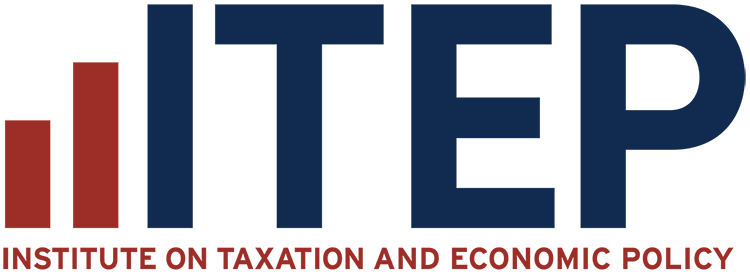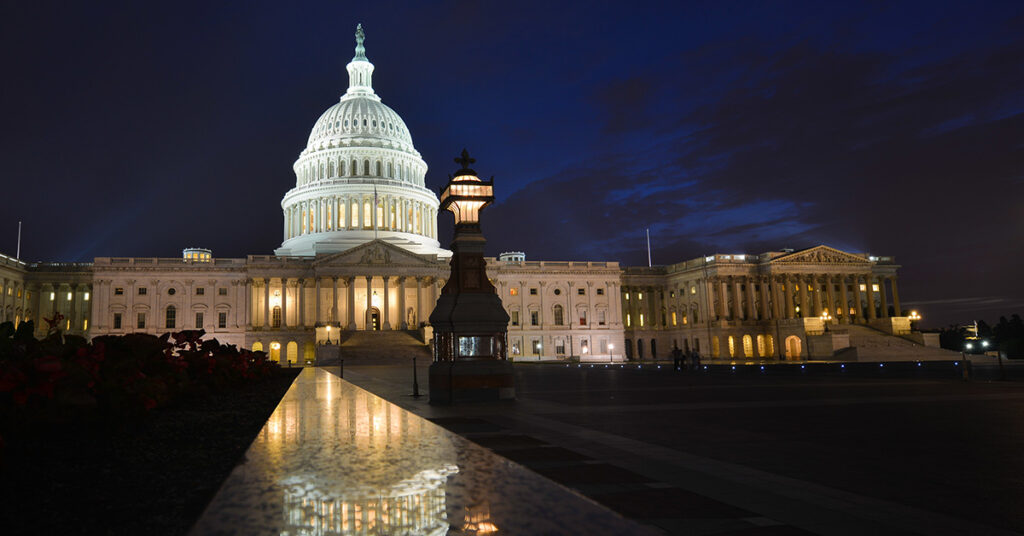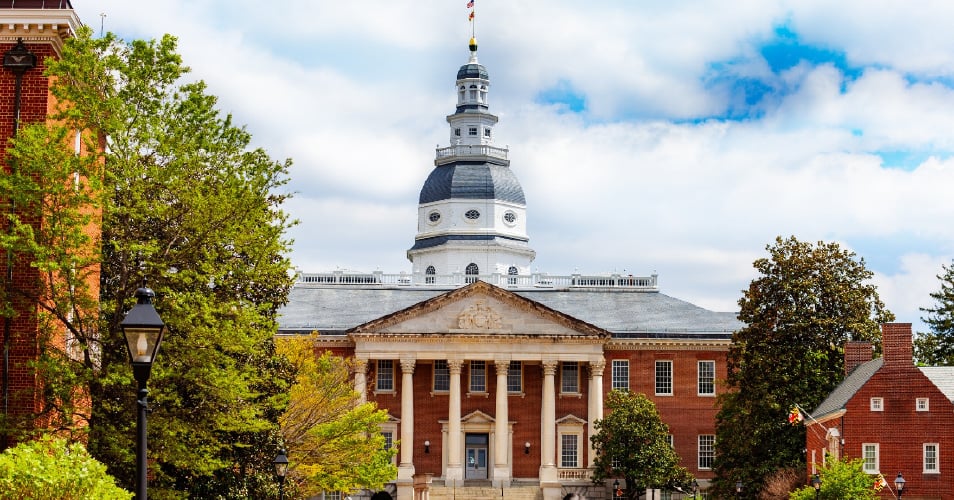Underlying state budget and tax decisions this year was an undercurrent of uncertainty regarding the impact of federal legislation. Federal policy choices on tariffs, taxes and spending cuts will be deeply felt by the states, which will have less money available to fund key priorities.
Now we know: The Trump administration and Republicans in Congress voted to slash taxes in ways that most reward the wealthiest, make the biggest cuts to health and nutrition assistance in history, and force federal spending cuts that will slash revenue sharing with the states. This means that states will have to either raise revenue or make severe spending cuts of their own, in ways that harm their residents and communities.
In this year’s legislative sessions, some states raised revenue to ensure that their coffers were well-funded, some proceeded with warranted caution, and many others passed large regressive tax cuts that pile on to the massive tax cuts the wealthiest just received under the federal megabill. (What follows below is not a comprehensive accounting, but rather examples from key state debates this year.)
Key Progressive Tax Victories: New Revenue and Tax Credits
Maryland Gov. Wes Moore signed into law a new budget that advances tax equity while boosting revenues to address the state’s deficit. The progressive tax package includes $1.6 billion in tax and fee increases, including:
- Two new brackets for high-income earners making over $1 million and $500,000 a year
- A 2 percent surtax on capital gains for those with incomes over $350,000
- An itemized deduction phaseout for those earning over $200,000, coupled with an increase in the state’s standard deduction
- Tax increases on cannabis, sports betting, and digital services
- A Child Tax Credit improvement that creates a phaseout where one previously did not exist
Prior to these tax changes, the wealthiest 1 percent of Marylanders paid the lowest state and local taxes as a share of their income of all income groups. The newly passed policies will ensure that the richest in the state no longer pay the lowest share.
In Washington, lawmakers addressed the state’s deficit with a combination of budget cuts and revenue raisers that resulted in roughly $4 billion in new revenue. To that end, Gov. Bob Ferguson signed a mixed bag of tax bills that included a progressive increase to the state’s pathbreaking tax on capital gains and enhancements to the estate tax. Lawmakers opted to add an additional 2.9 percent rate on taxable capital gains income exceeding $1 million while the estate tax changes raised the exclusion and increased the rates.
However, most of the revenue was raised from more regressive consumption tax increases, including the state’s Business & Occupations (or B&O) tax and a gas tax increase to continue funding infrastructure needs. A big legislative push for a tax on the financial assets of the wealthy was removed from this year’s package. However, the proposal will likely be back as its many proponents expressed their support with a symbolic vote in its favor on the final day of session.
Four states – Maine, Montana, New Jersey, and Rhode Island – took steps to increase revenue from high-income homeowners.
- Maine will now tax property with a value of more than $1 million at $6 (a $3.80 increase) for each $500 of the value of property transferred above the million-dollar threshold.
- In New Jersey, the sale of homes worth $1 million or more has long been subject to an additional transfer tax. This year, the state swapped payment from the buyer to the seller and increased rates on the sale of homes worth more than $2 million, capped at a 3.5 percent rate for homes worth more than $3.5 million.
- In Rhode Island, lawmakers created a new property tax for non-owner-occupied homes, commonly referred to as the “Taylor Swift Tax,” which levies a surcharge for those with a second home valued at more than $1 million.
- And in Montana, HB 231 and SB 542 will create two tiers for residential property and apply a higher rate on second homes and short-term rentals to help fund other residential property tax cuts.
Some states also made the commonsense choice to raise taxes on large corporations to help balance their budgets this year.
Connecticut extended its 10 percent corporate income tax surcharge on corporations that have at least $100 million in annual gross income or are taxable members of a combined group (in other words, a corporation with subsidiaries subject to the state’s combined reporting laws). The surcharge, which was set to expire after 2025, is now in place through 2028. Lawmakers there also closed corporate loopholes by eliminating their combined unitary reporting cap, which limited the impact of combined reporting on a company’s tax bill to $2.5 million.
Meanwhile, Illinois chose to include 50 percent of Global Intangible Low-Taxed Income, or GILTI, in its tax base. Prior to the passage of the federal megabill, the federal government taxed 50 percent of GILTI, which is a tax applied to the income of U.S. multinationals with low-tax foreign affiliates. The megabill broadened the GILTI tax base in a way that could increase revenues for states conforming to this federal provision but may also require state legislative action to benefit.
There were also many noteworthy tax credit changes across the country this year. State Child Tax Credits were improved or created in six states this year. Maine, Maryland, New York, Utah, and Vermont all enhanced existing credits, while Georgia created a new nonrefundable Child Tax Credit. And state Earned Income Tax Credits for working families were improved in four states – Connecticut, Montana, Virginia, and Vermont. (Click here for more details on the continued momentum around state credits.)
Steep Tax Cuts, Shifts Toward More Regressive Taxation
Not all tax changes this year moved states toward more equitable and sustainable tax systems. Ten states opted to favor the wealthy through cuts to their personal income taxes. These taxes are one of the most significant revenue sources levied at the state level and, through their consideration of ability to pay, are among the best ways of mitigating the regressive effects of consumption taxes and property taxes.
Two states – Mississippi and Oklahoma – took steps to fully eliminate, over time, their individual income taxes. Missouri lawmakers eliminated taxes on capital gains income. And lawmakers in Ohio and Kansas moved to less equitable flat tax systems. Each of these policy decisions will undoubtedly force cuts to vital public services and tax increases on low- and middle-income families over the long run.
Below are key details of these policies:
- The new Mississippi law will take the state’s flat income tax rate from 4 to 3 percent by 2030 and then further reduce it per a triggered reduction until the rate is zero. Our analysis of the fully implemented legislation shows an annual revenue loss of nearly $2.7 billion (if in effect today), with the top 1 percent of Mississippians receiving an average tax cut of $41,420.
- In the first year, Oklahoma’s new law condenses the state’s income tax brackets from six to three, cutting the top rate from 4.75 to 4.5 percent. It then ratchets down the state’s income tax rate to zero, over time, using revenue triggers. When fully phased in, Oklahoma is expected to lose $4.5 billion in revenue each year for shared priorities while over one-third of the tax cut dollars flow to the richest 5 percent in the state.
- By eliminating taxes on capital gains income, Missouri lawmakers prioritized passive asset building over working-class families earning wages or living off their retirement income. This makes Missouri the first state in the nation to tax wages and salaries while fully exempting the capital gains income that wealthy people receive from their assets. Eliminating this tax will result in the loss of more than $600 million in revenue a year while directing 80 percent of its tax cuts to the richest 5 percent in the state and a whopping two-thirds to the top 1 percent.
- Lawmakers in Ohio moved the state to a 2.75 percent flat tax by 2027, reducing the top tax rate of 3.5 percent for those with Ohio taxable income over $100,000, while maintaining the state’s current rate on income under $26,050. This is estimated to cost the state $1.1 billion a year.
- The new law in Kansas, which went into effect after lawmakers overrode a veto from the governor, moves the state, over time, from a graduated rate income tax to a much less equitable flat tax, resulting in large tax cuts for the richest Kansans. When the state’s individual income tax reaches 4 percent, our model projects that the policy will cost the state $1.2 billion a year, with 71 percent of the cut flowing to the top 20 percent.
The remaining states that moved forward with regressive income tax cuts this year include Georgia, Idaho, Kentucky, Montana, and Utah. Each state slashed its top income tax rates. Three states that cut their individual income tax rates (Idaho, Kansas, and Utah) also cut corporate income tax rates, primarily benefiting large, highly profitable corporations.
Meanwhile, income tax cut conversations continue in North Carolina, where the House and Senate are at a standstill over just how deeply to cut.
Many Property Tax Cut Conversations Go Down the Wrong Path
Income tax cuts were not the only focus during this year’s legislative sessions. Property taxes have been on the minds of lawmakers since the pandemic, when residents began to feel the effects of shifting markets and rising housing prices. This year, many states cut property taxes, forcing them to do without a sizable chunk of revenue that would otherwise help fund important services like schools, infrastructure, and public safety.
Here’s a look at a few notable state property tax cuts:
- Florida eliminated its 2 percent business rent tax, which applied to the rental of eligible commercial property.
- North Dakota lawmakers more than doubled the primary residence property tax credit from $500 to $1,250, provided a minimum credit of $500, expanded the homestead property tax income thresholds, and more. This is going to cost the state more than $475 million over two years.
- Wyoming now has a property tax exemption that is 25 percent of the fair market value of certain eligible single-family residences; the tax cut will lead to revenue decreases of $285 million a year in 2025 and 2026.
Many of the cuts that passed and continue to be discussed are not well-targeted to those least able to afford their property tax bills. And the revenue lost as a result may leave states and localities vulnerable, especially at a time when the reliability of federal support for states has declined. Better options are available to states looking to reform property tax systems and ensure that low- and middle-income residents can afford their tax bills.
Looking Ahead to 2026
As state lawmakers weigh the impact of recent federal legislation and the scaling back of support for states, they will surely identify growing revenue needs. Conformity to the various provisions of the megabill will continue to drive budget and tax policy conversations across the country. Recent federal and state decisions to cut taxes for highly affluent families should embolden state lawmakers to ask more of wealthy households. This will allow them to meet the needs of their residents today and in the future.







